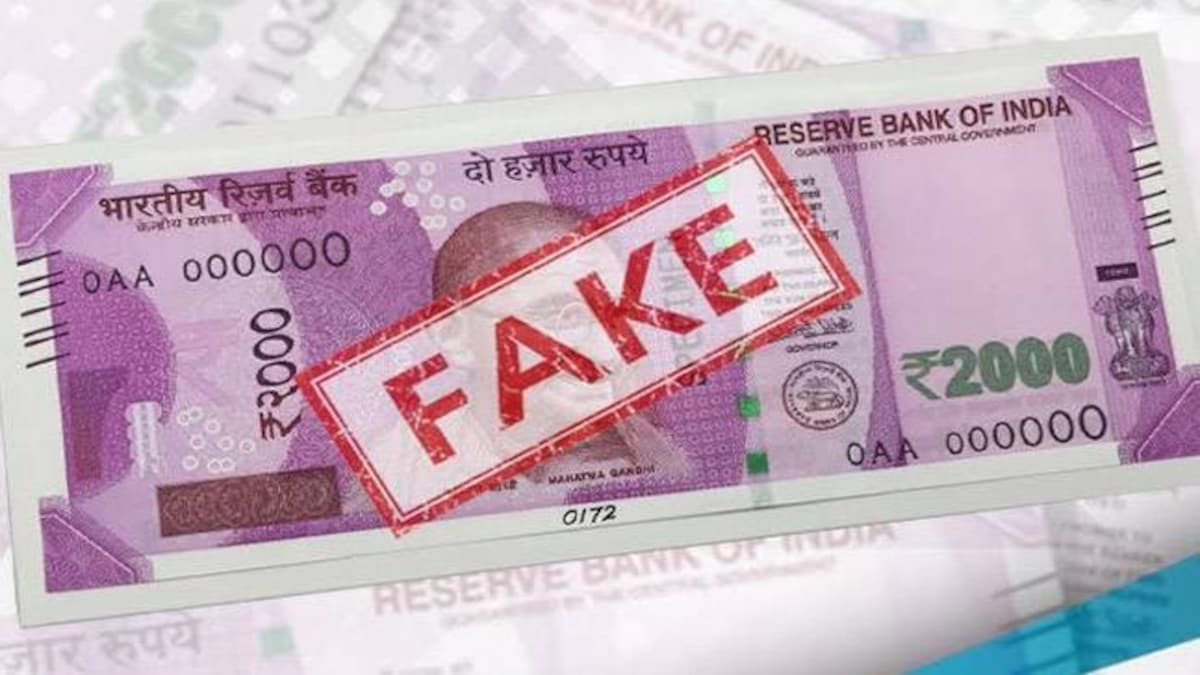According to RBI’s report, there has been a rise of almost 100% in circulation of fake Indian currency.
New Delhi: The Reserve Bank of India’s annual report for 2021-22 released earlier this year suggests that there has been a significant rise in the circulation of Fake Indian Currency Notes (FICN) in the denomination of Rs 500 and Rs 2,000 in the last one year, further suggesting that the black currency market is on the rise in India.
According to the RBI’s report, there has been a rise of almost 100% in the circulation of fake Indian currency. This significant rise of fake currency notes is witnessed in the denominations of Rs 500 and Rs 2000. For the denomination of Rs 500, there is a rise of almost 107% compared to last year and for Rs 2,000, there has been almost a rise 98% when compared to 2020-21.
The RBI data says that 79,669 pieces of fake Rs 500 currency notes have been detected in the banking system in 2021-22 compared to 39,453 such notes detected in 2020-21. While 13,604 pieces of Rs 2000’s fake currency notes have been detected during the same period.
Investigating agencies say that the number of such FICN being smuggled and circulated in India is much more than what has been detected by the RBI, since most of the fake currency notes do not end up within the banking system and such notes are mostly used to fund terrorist organisations operating against India.
The spread of FICN in India, much of which evades the banking system, can also be gauged from the data provided by the Ministry of Finance to the Parliament. According to the data provided by the Ministry to the Parliament, 2,44,834 pieces of fake Rs 2,000 notes were detected in India in the year 2020, while the banking system detected just 8,798 pieces of such Rs 2,000 fake notes in the same period.
The Finance Ministry’s data to the Parliament earlier this week also portrays a grim picture of the FICN status of India. The data shows that there has been almost a four time increase in the circulation of fake currencies by volume between 2016 to 2020. Compared to 2,81,839 pieces of FICN detected in 2016, the number rose to 8,34,947 pieces of FICN detected in India in 2020. The value of such FICN has also shown multi fold rise in between these years, from Rs 15.92 crore of FICN detected in 2016, the number increased to over Rs 92 crore of fake Indian currency being detected in India in 2020.
Indian agencies also say that most of these fake currencies enter India through the borders of Nepal, Bangladesh and sometimes from the Pakistan borders. Bangladesh is also known to be notorious for manufacturing of such fake Indian currency notes and pushing them into India through the Bengal and Assam borders, which then passes on to the terrorists’ organisations operating in India to fund their activities in India and to destabilise the Indian economy.
Not only land borders, but also sea and airports are used to smuggle such fake Indian currencies into India. Several cases of FICN have been detected at airports in India from people travelling in from Dubai and other UAE nations as well from some countries in the South East Asia.
The National Investigating Agency (NIA) that has the mandate to investigate the cases of FICN since much of it is used for terror funding says many of the FICN detected have similarities with the currency paper used in Pakistan. The NIA sources also say that the ISI and some of their operatives in Bangladesh have been involved in the manufacturing and smuggling of FICN into India through the porous borders in Bengal and Assam.
Malda district in Bengal has also been notoriously involved in the smuggling of FICN into India and the NIA has multiple cases registered against individuals having links or belonging to Malda that have been involved in such cases.
Earlier this week, a Special NIA Court in Delhi sentenced Khalek Sheikh a resident of Malda with four years of rigorous imprisonment in a FICN case of 2019. While last month, a special NIA court in Patna sentenced Mohammad Ali Akhtar Ansari for 20 years of rigorous imprisonment for trafficking FICN through the Indo-Nepal border.
The government of India has also signed a Memorandum of Understanding (MoU) with between Indian and Bangladesh in 2015 to prevent and counter smuggling and circulation of fake currency notes. Further, a Joint Task Force is also functioning between India and Bangladesh for building trust and cooperation for exchange of information and analysis of smugglers of FICN. While the NIA is also coordinating with its counterpart in Bangladesh to nab elements backed by the ISI operating in Bangladesh to manufacture and circulate FICN in India and dismantle their units.
Sources in the NIA have said that their efforts with its counterparts in Dhaka, Bangladesh has led to many individuals involved in this crime being caught in that country where huge printing machines of fake Indian currencies, ink and currency paper were recovered and the agency also believes that this joint effort would also lead to the decline in the FICN smuggling in India.

